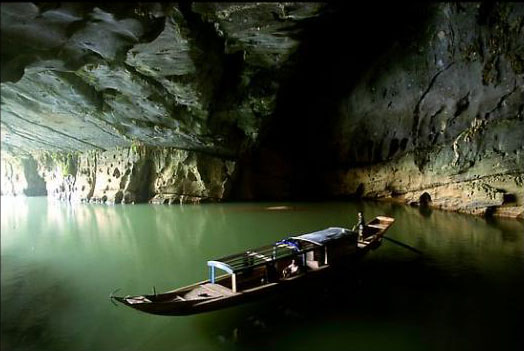According to Vietnam’s state-run news agency, the country’s southern coastal province of Ba Ria-Vung Tau attracted some 650, 000 visitors with its numerous beautiful beaches from Feb. 9 to 17, up by 10 percent over the same period last year.
Many of the tourists came from Russia, South Korea and Japan, said the provincial Department of Culture, Sports and Tourism.
Meanwhile, the capital city of Hanoi in the north has received 2.08 million tourists during the period, including 60,000 foreigners, an increase of 11 percent from the same period last year.
According to the municipal Department of Culture, Sports and Tourism, the Thang Long Imperial Citadel, President Ho Chi Minh relic complex, Ngoc Son Temple, the Hanoi Old Quarter and the Museum of Ethnology were favorite destinations of tourists.

From Feb. 9 to 18, Vietnam’s UNESCO World Heritage Site Ha Long Bay in eastern Quang Ninh province received around 350,000 person- times, an increase of 17 percent over 2011.
During the period, the central Da Nang city hosted nearly 150, 000 visitors, with 48,000 of them are foreign tourists who came mostly from China, South Korea, Singapore, Australia, the United States and Thailand.
Notably, visitors came to Da Nang by air and sea routes increased dramatically. During the first three days, over 40 flights brought 5,160 foreign visitors to the city, up 26 percent over the same period last year.
The country’s Saigon tourist travel service company revealed that as many as 47 cruises ships with 42,000 tourists abroad will dock at Tien Sa port in the first quarter of this year, up 31 percent over 2012.

Nguyen Manh Cuong, Deputy General Director of the Vietnam National Administration of Tourism said that at present, the world travel trend is shifting from the Europe and the United States to Asia, especially the Asia-Pacific region.
Benefiting from the shift, Vietnamese tour operators and accommodation providers in recent years have been involved much in promoting the image of the destination to lure more tourists.
In 2012, Vietnam has increased almost 500 accommodation facilities, including 60 accommodation facilities rated from 3 to 5 stars which concentrated in the central coastal region.
Furthermore, the tour operators and accommodation suppliers also work closely with the airlines services to open direct flights to facilitate attracting visitors.
Last year, Vietnam’s tourism sector served over 6.84 million foreign visitors and some 32.5 million domestic tourists, pocketing 160 trillion Vietnamese dong (7.67 billion U.S. dollars).
However, besides the results achieved, the potential to promote the tourism sector is still not being fully tapped due to limited budget and poor management.
At present, Vietnam’s tourism sector has to face a hard reality that up to 80-85 percent of international tourists never turn to Vietnam after their first visit. It is high time for the country’s authority to take drastic treatment to deal with the issue.
In a movement, the Vietnamese prime minister in January has approved the master plan on Vietnam tourism development to 2020, vision 2030.
The overall objectives to 2020 are to develop tourism to be a key economic industry with high professionalism, modern and fairly synchronously-developed tourist infrastructure; high quality, competitive and diversified tourist products imprinted with unique traditional cultural characteristics.
The specific objectives are to develop seven tourism zones with specific tourism products, 46 national tourist areas, 41 national tourist spots, 12 tourist cities and other key tourist spots.
Vietnam set target to welcome some 10 to 10.5 million foreign tourists and 17 to 18 million domestic travelers by 2020 with the revenue of 18 to 19 billion U.S. dollars, contributing to 6.5 percent to 7 percent of the country’s Gross Domestic Product (GDP), according to Vietnam National Administration of Tourism.















 From a distance, Lung Cu is a spectacular sight, with the view dominated by giant boulders and the national flag flying above Dragon Mountain, all set to the backdrop of magnificent forests.
From a distance, Lung Cu is a spectacular sight, with the view dominated by giant boulders and the national flag flying above Dragon Mountain, all set to the backdrop of magnificent forests.



















